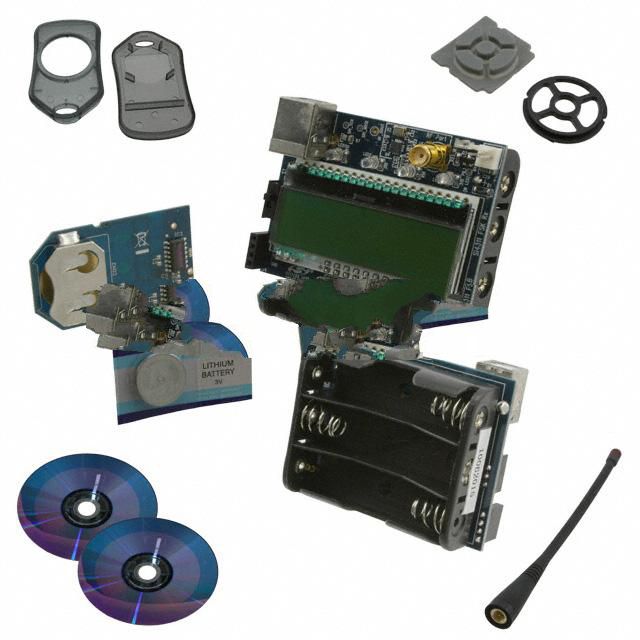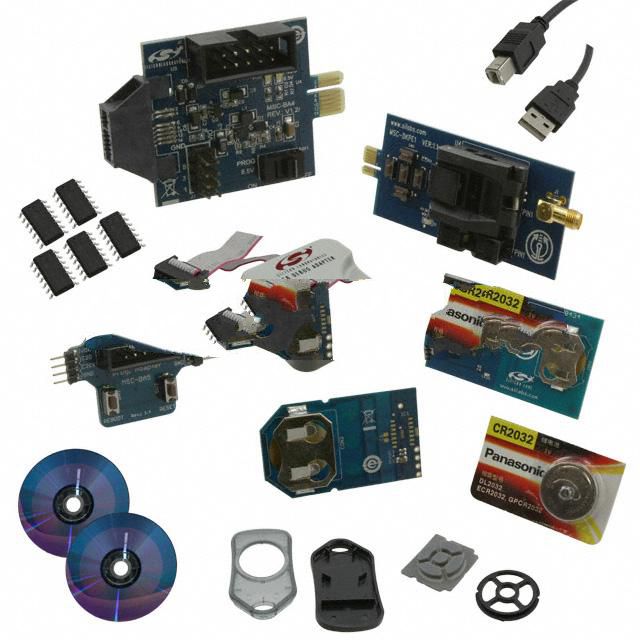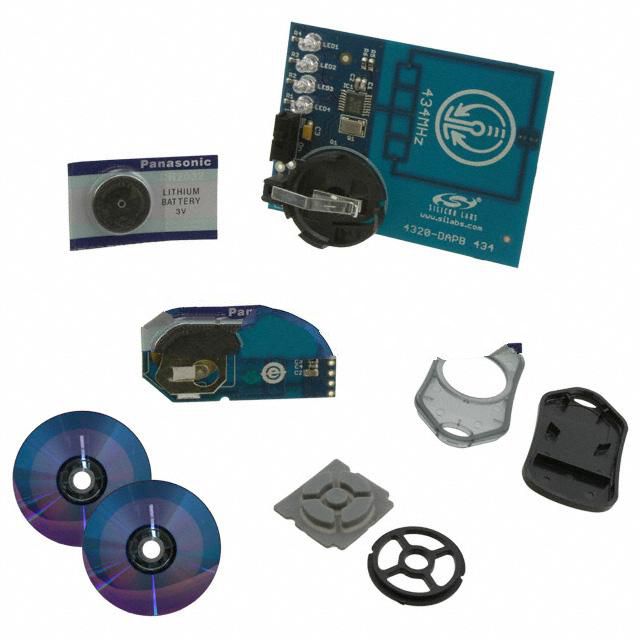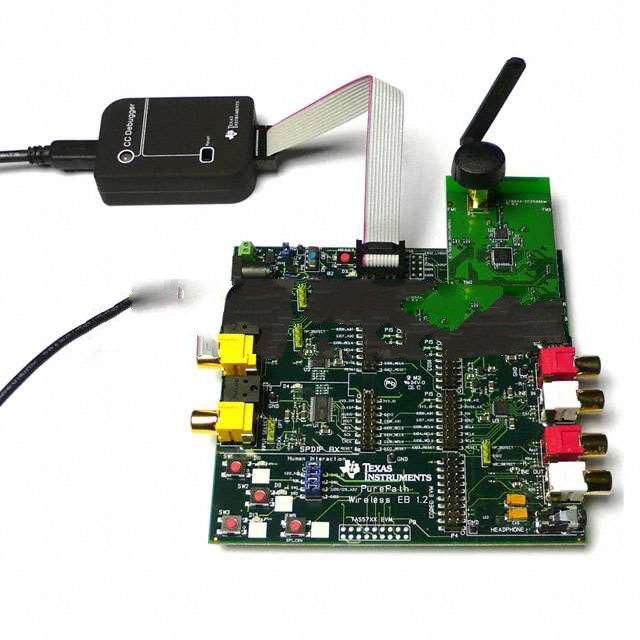XBP24BZ7B-DK Product Introduction:
Digi Part Number XBP24BZ7B-DK(RF Evaluation and Development Kits, Boards), developed and manufactured by Digi, distributed globally by Jinftry. We distribute various electronic components from world-renowned brands and provide one-stop services, making us a trusted global electronic component distributor.
XBP24BZ7B-DK is one of the part numbers distributed by Jinftry, and you can learn about its specifications/configurations, package/case, Datasheet, and other information here. Electronic components are affected by supply and demand, and prices fluctuate frequently. If you have a demand, please do not hesitate to send us an RFQ or email us immediately sales@jinftry.com Please inquire about the real-time unit price, Data Code, Lead time, payment terms, and any other information you would like to know. We will do our best to provide you with a quotation and reply as soon as possible.
Introducing the Digi XBP24BZ7B-DK, a cutting-edge wireless communication module designed to revolutionize connectivity in various industries. With its advanced features and versatile application fields, this module is set to transform the way businesses operate.
The Digi XBP24BZ7B-DK boasts a compact and robust design, making it ideal for use in demanding environments. It supports the Zigbee protocol, ensuring reliable and secure wireless communication over long distances. With a low power consumption, this module is perfect for battery-powered devices, extending their operational life.
Equipped with a high-performance microcontroller, the Digi XBP24BZ7B-DK offers exceptional processing power and memory capacity. It also features a wide range of interfaces, including UART, SPI, and I2C, allowing seamless integration with various devices and systems.
The Digi XBP24BZ7B-DK finds its application in numerous fields. In the industrial sector, it enables efficient machine-to-machine communication, facilitating automation and improving productivity. In the healthcare industry, it enables remote patient monitoring and data transmission, enhancing the quality of care. Additionally, it can be used in smart home systems, enabling seamless connectivity between devices and enhancing convenience for homeowners.
In conclusion, the Digi XBP24BZ7B-DK is a game-changer in wireless communication. With its advanced features, robust design, and versatile application fields, this module is set to transform connectivity in various industries, making it an essential tool for businesses seeking to stay ahead in the digital age.
RF Evaluation and Development Kits, Boards are specialized tools designed for the design, testing, and evaluation of radio frequency (RF) integrated circuits. This kit/board integrates a complete RF subsystem, including RF front-end, signal processor, power management unit, necessary interface circuits, as well as necessary testing points and debugging tools. It allows engineers to quickly build and validate the performance of RF circuits in the early stages of development, including key parameters such as gain, noise figure, linearity, frequency response, etc. The RF evaluation and development kit typically adopts a modular design, making it easy for users to configure and expand according to specific needs. It also provides rich development documentation and example code to help users accelerate the development process. In addition, the kit also supports multiple communication protocols and standards, such as GSM, LTE, Wi Fi, Bluetooth, etc., providing comprehensive support for the development of wireless communication devices.
Application
RF Evaluation and Development Kits, Boards are widely used in RF circuit design, testing and evaluation in wireless communication, Internet of Things, automotive electronics, aerospace and other fields. In the field of wireless communication, it has become an indispensable tool in the research and development of communication devices such as mobile phones, base stations, and wireless sensors, helping engineers quickly verify the performance of RF modules and optimize design solutions. In the field of IoT, RF evaluation and development kits and boards support various IoT communication protocols such as Low Power Wide Area Network (LPWAN), Zigbee, LoRa, etc., providing strong support for the research and development of IoT devices. In addition, in the field of automotive electronics, with the rapid development of autonomous driving and vehicle networking technology, RF evaluation and development kits and boards are widely used in the research and development of key components such as automotive radar and in vehicle communication systems. The aerospace industry has stricter requirements for RF technology, and the RF evaluation and development kit and board's high precision, reliability, and scalability make it the preferred tool for RF circuit design and verification in this field.
FAQ about RF Evaluation and Development Kits, Boards
-
1. What is a radio frequency integrated circuit?
An integrated circuit specially designed for radio frequency signal processing
A radio frequency integrated circuit (RFIC) is an integrated circuit specially designed for radio frequency signal processing. Radio frequency signals usually refer to electromagnetic wave signals with frequencies between a few kilohertz and tens of gigahertz, which are crucial in wireless communications, remote control, radar and other radio frequency applications.
Definition and function of radio frequency integrated circuits
A radio frequency integrated circuit (RFIC) is an integrated circuit specially designed for radio frequency signal processing. It can integrate multiple functional modules (such as amplifiers, oscillators, modems, etc.) on a single chip, thereby reducing the complexity and cost of the system. The frequency range of RFIC is usually from 300 MHz to tens of GHz, suitable for various radio frequency applications.
-
2. What are the main application areas of radio frequency integrated circuits?
RFIC has a wide range of applications, mainly including the following aspects:
Wireless communication: used in mobile phones, wireless walkie-talkies, Bluetooth devices and Wi-Fi terminals, etc., responsible for modulating, demodulating and amplifying signals.
GPS: RFIC is often used in GPS receivers to process GPS signals and realize positioning functions.
Radio frequency identification (RFID): used in RFID tags and readers to realize contactless identification and data transmission.
Television and radio: used in television receivers, digital TV tuners and radios to process radio frequency signals.
Radar systems: used for signal processing and target detection in weather radars, military radars and other monitoring systems.
Internet of Things (IoT) devices: act as wireless communication modules in various IoT devices, such as smart home controllers and remote sensors.
Medical devices: some medical devices, such as remote monitoring devices and implantable medical devices, also use RFIC for data transmission.
Automotive electronics: used in vehicle communication systems, such as vehicle wireless communication, vehicle positioning and smart key systems.
-
3. What does an RFIC usually consist of?
Radio frequency integrated circuits (RFICs) usually consist of the following components:
Antenna: responsible for signal transmission and reception, completing the conversion of conducted RF signals to electromagnetic waves in space .
Filter: responsible for signal filtering, usually a bandpass filter, allowing only the required signals to be transmitted or received, filtering out useless signals and interference.
Low noise amplifier (LNA): used to amplify weak received signals and reduce noise interference on the signal.
Power amplifier (PA): Amplifies the small signal in the transmission path to a certain power level to ensure long-distance wireless transmission.
Modulator: Used for signal modulation, usually "up-conversion", to load information onto the RF carrier.
Demodulator: Decodes the received signal and recovers the original signal from the RF carrier.
Application areas of RF integrated circuits:
Wireless communication: Used in mobile phones, wireless walkie-talkies, Bluetooth devices, and Wi-Fi terminals, etc., responsible for modulating, demodulating, and amplifying signals.
GPS: Used in GPS receivers to process GPS signals and realize positioning functions.
Radio frequency identification (RFID): Used in RFID tags and readers to achieve contactless identification and data transmission.
Television and broadcasting: Used in television receiving equipment, digital TV tuners and broadcasting to process RF signals.
Radar systems: Used for signal processing and target detection in weather radars, military radars, and other monitoring systems.
Internet of Things (IoT) devices: Act as wireless communication modules in devices such as smart home controllers and remote sensors.
Medical devices: Some medical devices such as remote monitoring devices and implantable medical devices also use RFIC for data transmission.
Automotive electronics: used in vehicle communication systems, such as vehicle wireless communication, vehicle positioning and smart key systems.
RF integrated circuits play a vital role in modern electronic products and systems with their miniaturization, low power consumption and high integration.
 Lead free / RoHS Compliant
Lead free / RoHS Compliant































